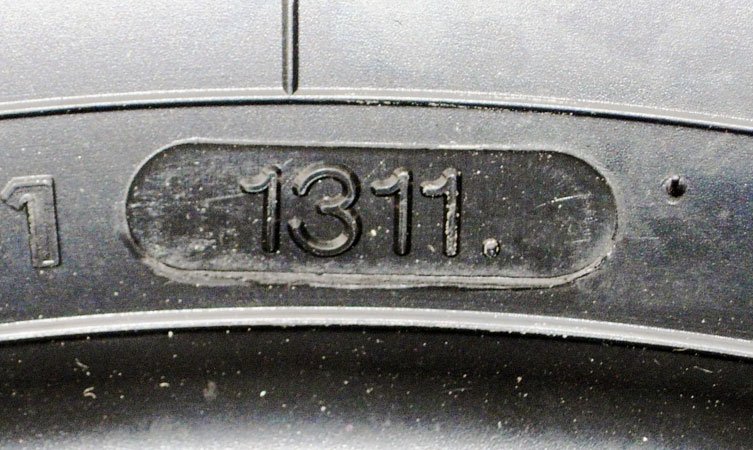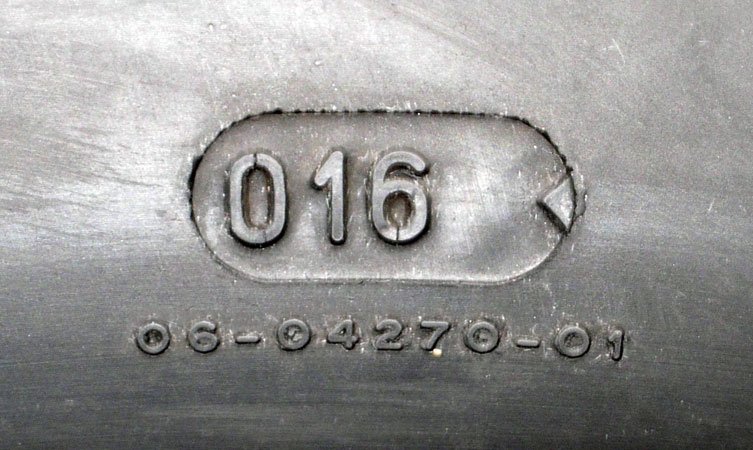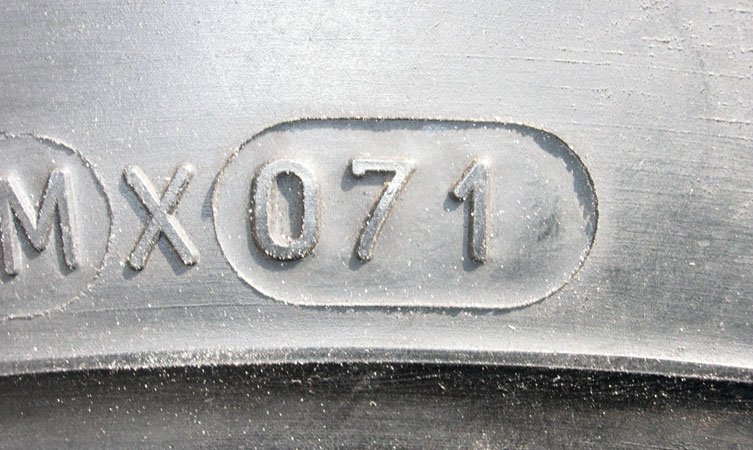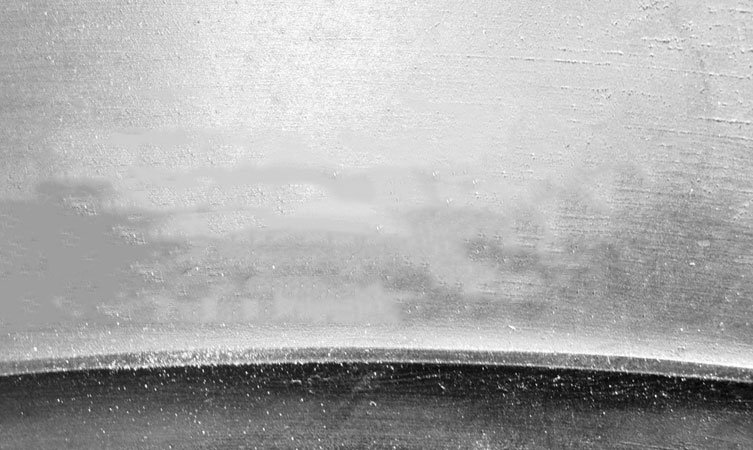
Tech Info
Crossply and radial tyres use different size markings.
Crossply tyres are measured in inches. The first number (7.00, for example) relates to the overall section width (seven inches), the second number (16, for example) is the diameter of the wheel it fits (16 inches).
Radial tyres are measured in millimetres and inches. The first number (say, 185) is the overall section width in millimetres. The two figures number after the forward slash (75, for example) relate to the sidewall profile of the tyre. The profile is a percentage of the width of the tyre. If no number is shown, then the tyre is 80 profile.
The ‘R’ before the next two numbers denotes the tyre is a radial, and the diameter of the wheel the tyre fits follows this.
You should aim to match the size of your new tyres with those recommended in your vehicle’s handbook — or we can check for you. The tyres on your vehicle now aren’t necessarily the correct size.
Where two figures and a letter are displayed together (ie 82 S) on both types of tyre, this is the load and speed rating. This is explained in more detail with reference charts lower down the page.
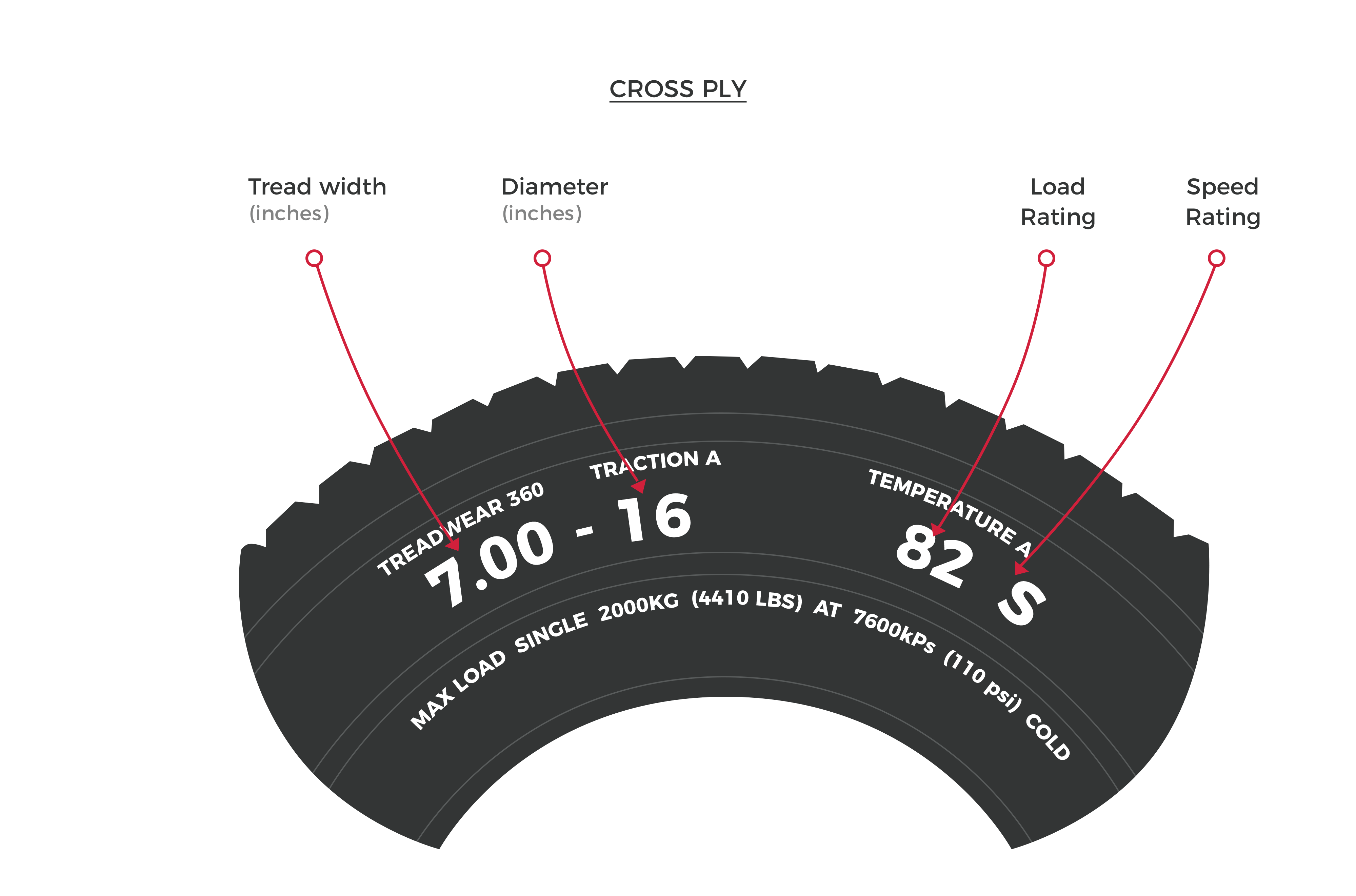
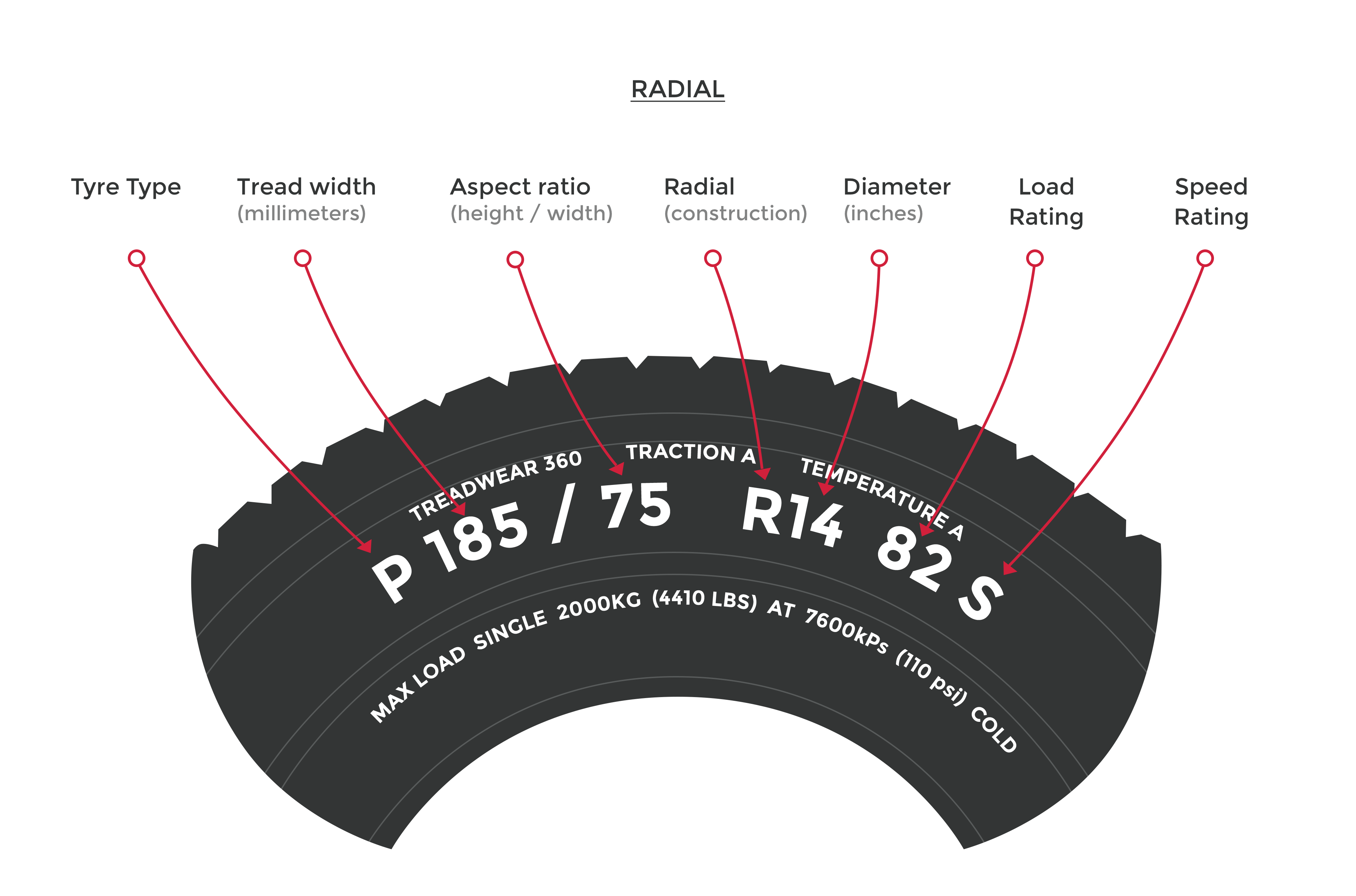
The load and speed ratings on a tyre are displayed as a number (82, for example) and a single letter. These are deciphered for you in the tables below.
You should aim to match the load and speed ratings on your new tyres with those recommended in your vehicle’s handbook — or we can check for you. The tyres on your vehicle now aren’t necessarily the correct ones for it.
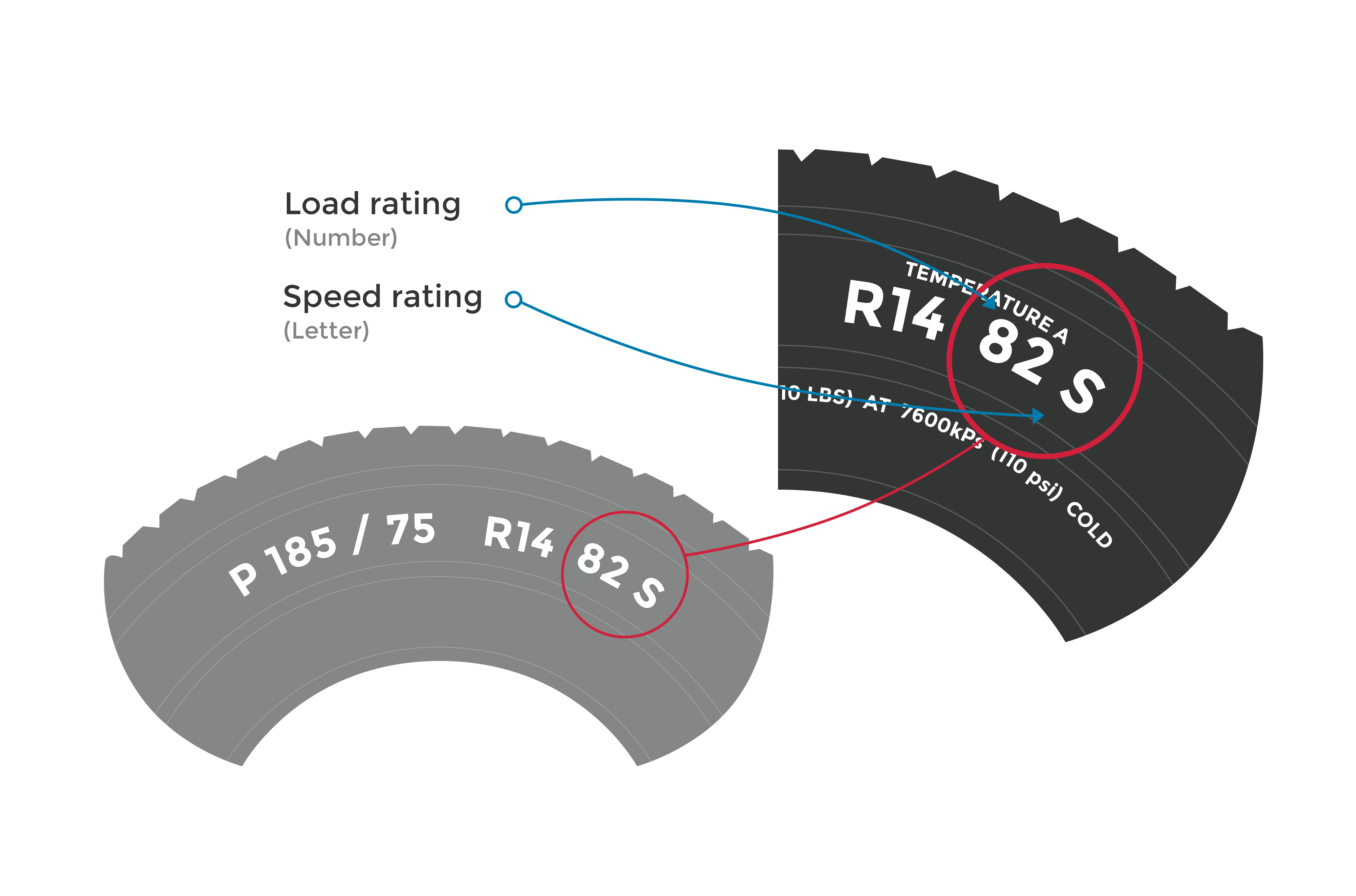
This table shows the maximum speed a tyre is safely designed to travel at.
| Speed Rating | MPH | KPH |
|---|---|---|
| N | 87 | 140 |
| P | 93 | 150 |
| Q | 99 | 160 |
| R | 106 | 170 |
| S | 112 | 180 |
| T | 118 | 190 |
| Speed Rating | MPH | KPH |
|---|---|---|
| U | 124 | 200 |
| H | 130 | 210 |
| V | 149 | 240 |
| Z | 150+ | 240+ |
| W | 168 | 270 |
| Y | 186 | 300 |
| Load Index | Load in KG |
|---|---|
| 62 | 265 |
| 63 | 272 |
| 64 | 280 |
| 65 | 290 |
| 66 | 300 |
| 67 | 307 |
| 68 | 315 |
| 69 | 325 |
| 70 | 335 |
| 71 | 345 |
| 72 | 355 |
| 73 | 365 |
| 74 | 375 |
| 75 | 387 |
| 76 | 400 |
| 77 | 412 |
| 78 | 425 |
| 79 | 437 |
| 80 | 450 |
| 81 | 462 |
| 82 | 475 |
| 83 | 487 |
| Load Index | Load in KG |
|---|---|
| 84 | 500 |
| 85 | 515 |
| 86 | 530 |
| 87 | 545 |
| 88 | 560 |
| 89 | 580 |
| 90 | 600 |
| 91 | 615 |
| 92 | 630 |
| 93 | 650 |
| 94 | 670 |
| 95 | 690 |
| 96 | 710 |
| 97 | 730 |
| 98 | 750 |
| 99 | 775 |
| 100 | 800 |
| 101 | 825 |
| 102 | 850 |
| 103 | 875 |
| 104 | 900 |
| 105 | 925 |
| Load Index | Load in KG |
|---|---|
| 106 | 950 |
| 107 | 975 |
| 108 | 1000 |
| 109 | 1030 |
| 110 | 1060 |
| 111 | 1090 |
| 112 | 1120 |
| 113 | 1150 |
| 114 | 1180 |
| 115 | 1215 |
| 116 | 1250 |
| 117 | 1285 |
| 118 | 1320 |
| 119 | 1360 |
| 120 | 1400 |
| 121 | 1450 |
| 122 | 1500 |
| 123 | 1550 |
| 124 | 1600 |
| 125 | 1650 |
| 126 | 1700 |
